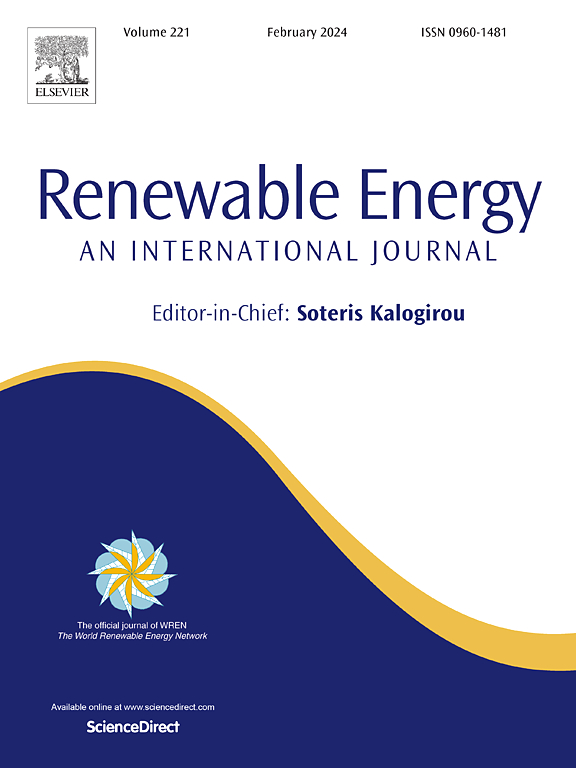轻质膨胀粘土骨料(Fe2O3-f-LECA)负载氧化铁制备生物柴油催化剂:基于Box-Behnken设计的优化和基于遗传算法和粒子群算法的ANFIS建模
IF 9
1区 工程技术
Q1 ENERGY & FUELS
引用次数: 0
摘要
采用微波溶液燃烧法制备了氧化铁负载的功能化轻质膨胀粘土集料(f-LECA)催化剂,用于生物柴油的生产。表征技术包括XRD、FESEM、TEM、BET-BJH和TPD-NH3,证实了氧化铁在f-LECA上的均匀分散,从而提高了催化性能。BET-BJH分析显示,其比表面积为8.35 m2/g,平均孔径为10.47 nm,孔隙结构发达,有利于催化反应。在346°C和390°C的氨解吸峰表明,催化剂具有强酸性,表明存在酯交换所必需的中等强度酸性位点。优化条件为:温度100℃,甲醇油摩尔比20.3 wt%,反应时间1 h,生物柴油转化率最高可达96.47%。使用响应面法(RSM)和自适应神经模糊推理系统(ANFIS)建模的优化显示出很强的相关性(R2 >;预测结果与实验结果之间的差值为0.96)。使用粒子群优化(PSO)算法进一步改进模型精度,产生基于MAE、MSE、RMSE和R2指标的最小误差值。f- leca负载氧化铁具有良好的催化活性、经济可行性和环境可持续性,是油酸大规模生产生物柴油的理想选择。本文章由计算机程序翻译,如有差异,请以英文原文为准。
Biodiesel production by iron oxide supported on light weight expanded clay aggregate (Fe2O3-f-LECA) Catalyst: Box-Behnken design-based optimization and ANFIS modeling with GA and PSO
This study presents the synthesis of an iron oxide-supported functionalized lightweight expanded clay aggregate (f-LECA) catalyst via the microwave solution combustion method for biodiesel production. Characterization techniques, including XRD, FESEM, TEM, BET-BJH, and TPD-NH3, confirmed the uniform dispersion of iron oxide on f-LECA, leading to enhanced catalytic performance. BET-BJH analysis revealed a specific surface area of 8.35 m2/g, an average pore width of 10.47 nm, and a well-developed pore structure conducive to catalytic reactions. The catalyst exhibited strong acidity, as evidenced by ammonia desorption peaks at 346 °C and 390 °C, indicating the presence of medium-strength acidic sites essential for transesterification. A maximum biodiesel conversion of 96.47 % was achieved under optimized conditions: 100 °C, a methanol-to-oil molar ratio of 20, 3 wt% catalyst loading, and 1-h reaction time. Optimization using Response Surface Methodology (RSM) and Adaptive Neuro-Fuzzy Inference System (ANFIS) modeling demonstrated a strong correlation (R2 > 0.96) between predicted and experimental results. Further refinement using the Particle Swarm Optimization (PSO) algorithm enhanced model accuracy, yielding minimal error values based on MAE, MSE, RMSE, and R2 metrics. The excellent catalytic activity, economic feasibility, and environmental sustainability of f-LECA-supported iron oxide make it a promising candidate for large-scale biodiesel production from oleic acid.
求助全文
通过发布文献求助,成功后即可免费获取论文全文。
去求助
来源期刊

Renewable Energy
工程技术-能源与燃料
CiteScore
18.40
自引率
9.20%
发文量
1955
审稿时长
6.6 months
期刊介绍:
Renewable Energy journal is dedicated to advancing knowledge and disseminating insights on various topics and technologies within renewable energy systems and components. Our mission is to support researchers, engineers, economists, manufacturers, NGOs, associations, and societies in staying updated on new developments in their respective fields and applying alternative energy solutions to current practices.
As an international, multidisciplinary journal in renewable energy engineering and research, we strive to be a premier peer-reviewed platform and a trusted source of original research and reviews in the field of renewable energy. Join us in our endeavor to drive innovation and progress in sustainable energy solutions.
 求助内容:
求助内容: 应助结果提醒方式:
应助结果提醒方式:


